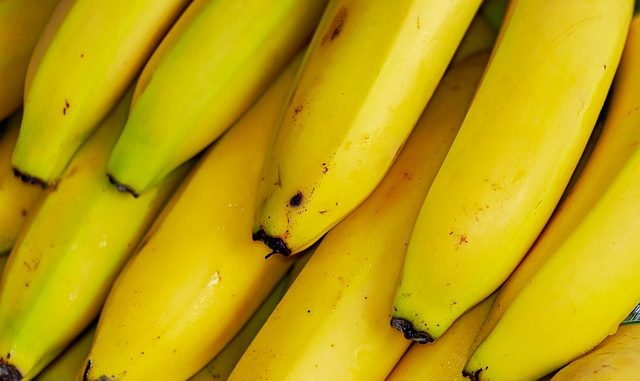
Bananas (Musa sapientum var. paradisiaca) in their own right are highly nutritious but banana powder might be much more versatile for use by product developers. The powder is produced from processing ripe bananas. In the food context, only ripe bananas are used otherwise if it s for cosmetics, then green bananas are processed. We will discuss the former – the banana powder from ripe fruit.
Generally, banana powder has been for many years a key component of milk shakes and plenty of baby food. It’s also found in biscuits, cakes and nowadays in formulations for the serious sports athlete and medical foods.
History Of Use
Baby formulas came into their own around the turn of the 1900s when it was realised that dairy milk not be suited to all babies and they needed a higher dose of protein. During the 1st World War, West Indian countries found they had a major commodity supplying banana powder and dried banana ‘figs’ to war torn countries like the UK.
One of the great manufacturers of processed tropical fruit products, the United Fruit Company (USA) produced a product in the 1930’s known as Melzo. The formulation contained high levels of banana powder. It was marketed back then with the strap line:-
“health food for children and old folks, as a corrective for certain indigestions, and as a revitalizer for all who are sluggish mentally or physically” (Scofield, 1999).
Most bananas are sourced from Ecuador and Peru.
Process Of Manufacture Of Banana Powder
Banana pulp is chopped mechanically and then milled further using a colloid mill to produce a fine paste. The paste is treated with about 200-300 ppm of sodium metabisulphite which bleaches the pulp and helps stabilise it against microbial damage. The colour, due to sulphiting turns the paste a pale yellow.
The paste is dried by drum drying or by spray drying. Drum drying is preferred as it cuts down on losses which are 2-5% greater using spray drying. Drum drying is also a more effective process with a lower moisture content in the final product. Much of the flavour is retained upon drying too.
The shelf-life of dried banana powder is generally a year.
The powder is usually supplied for retail in pouch packs but larger amounts are supplied in cardboard drums and cannisters.
Nutrition Facts
|
Amount Per
|
| Calories 346 |
| % Daily Value* | |
| Total Fat 1.8 g | 2% |
| Saturated fat 0.7 g | 3% |
| Polyunsaturated fat 0.3 g | |
| Monounsaturated fat 0.2 g | |
| Cholesterol 0 mg | 0% |
| Sodium 3 mg | 0% |
| Potassium 1,491 mg | 42% |
| Total Carbohydrate 88 g | 29% |
| Dietary fiber 10 g | 40% |
| Sugar 47 g | |
| Protein 3.9 g | 7% |
| Vitamin A | 4% | Vitamin C | 11% |
| Calcium | 2% | Iron | 6% |
| Vitamin D | 0% | Vitamin B-6 | 20% |
| Vitamin B-12 | 0% | Magnesium | 27% |
| *Per cent Daily Values are based on a 2,000 calorie diet. Your daily values may be higher or lower depending on your calorie needs. |
Product Development Uses
Banana powder retains its flavour and does not need bolstering with added banana essence. It is a good source of protein and carbohydrate especially for higher end sports products for example. The powder is relatively sweet and is sold as an ingredient in its own right for use in protein shakes, hydration shakes in combination with coconut water powder for example. Some food producers use it for baking, ice cream, cereals and bar manufacture.
One considerable benefit is the claim that it is gluten-free. There is a a product prepared similarly called Green Banana Flour or Green Banana Powder. This is a different product which deserves discussion on its own merit.
Clinical Uses
Traditionally, banana powder has been valued as a general food for those suffering gastric issues especially indigestion (dyspepsia). Recent research supports this view when an Indian research group (Goel et al., 1986) identified components in the powder which were better at preventing ulcers than other foods. These studies have however been conducted in rats ! The banana powder also supported cell growth in the areas of the gut surrounding the ulcer. It hints at a powerful prebiotic effect.
A later study in a rat model found that banana powder increased their gastric mucosal resistance by possibly improving the production of mucus (Mukhopadhyaya et al., 1987). Mucus is an important factor in preventing ulcers.
The properties of banana flour have been well reviewed by Imam and Akter (2011).
References
Goel, R. K., Gupta, S., Shankar, R., & Sanyal, A. K. (1986). Anti-ulcerogenic effect of banana powder (Musa sapientum var. paradisiaca) and its effect on mucosal resistance. Journal of Ethnopharmacology, 18(1), pp. 33-44
Imam, M. Z., & Akter, S. (2011). Musa paradisiaca L. and Musa sapientum L.: A phytochemical and pharmacological review. Journal of Applied Pharmaceutical Science, 1(5), pp. 14-20.
Mukhopadhyaya, K., Bhattacharya, D., Chakraborty, A., Goel, R. K., & Sanyal, A. K. (1987). Effect of banana powder (Musa sapientum var. paradisiaca) on gastric mucosal shedding. Journal of Ethnopharmacology, 21(1), pp. 11-19.
Scofield Wilson, David (1999). Rooted in America: foodlore of popular fruits and vegetables. Univ. of Tennessee Press. pp. 28–29.
Leave a Reply